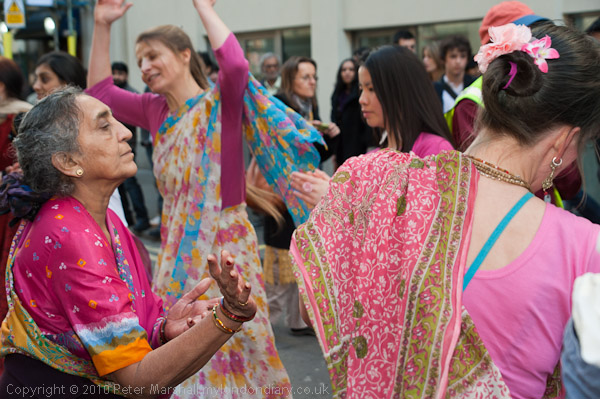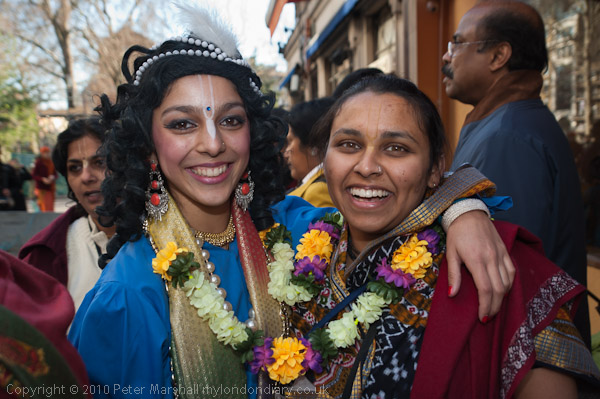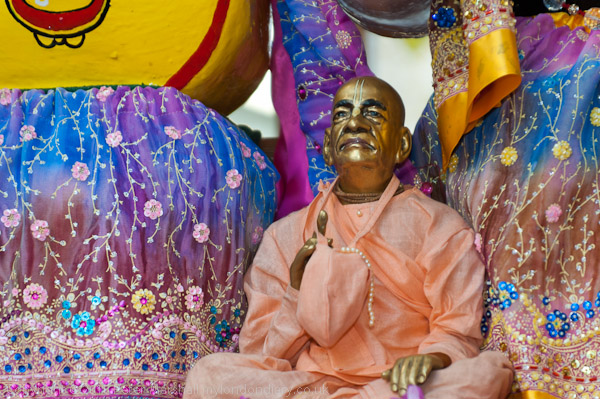Saturday evening I wanted to go on to a social occasion after a day of taking pictures, and I decided that my normal camera bag would be a bit in the way. There would have been a cloakroom where I would have had to leave it for some of the time, but I hate having to leave my kit in these, as I’m sure it would not be covered either by their or my insurance. It may be an old and beat-up looking bag, but typically is more than £5000 worth of gear in it. And afterwards I would have to take it with me into a busy pub, where camera bags present an invitation to opportunist thieves, particularly when their owners are perhaps a little less careful after a few drinks.
So I decided to travel light, taking a smaller and less obvious shoulder bag that I can usually take into places without any problems and doesn’t look as if it contains anything of value.
Ordinary bags lack the protection for your gear that is built into camera bags, which means a smaller bag can potentially hold more, but you do need to be careful about damage to gear, and not try to pack in too much. So I decided to make do with just the one camera, the D700, with two lenses, the Nikon 16-35mm and a Sigma DG 28-300 f3.5-6.3. The DG means designed for digital, and although I bought it fairly recently it has now been discontinued.
The Sigma is in some ways a remarkable lens, only sticking out just over 3 inches (87mm) from the front of the camera when at its shortest (and shortest focal length), weighing just over 1lb (465g) and taking a 62mm filter. Considering it covers the full frame this seems incredible, and it is perhaps just a little too good to be true. Nikon’s 28-300 is over an inch longer, weighs 800g and takes a 77mm.
Usually I use it on the D300, as an alternative to the Nikon 18-105mm when I know I will need something longer – on that format it is equivalent to a 42-450mm. So long as there is enough light (at say ISO 1250 that needn’t be a great deal) for its small maximum aperture not to be a problem it can do pretty well.

28-300 Sigma at 60mm, 1/320 f9, ISO 1000
Of course there are limitations, and on Saturday I came across some of these when I tried to use it to photograph the two demonstrations and a religious event I covered.

28-300 Sigma, 35mm, 1/200 f7.1 ISO 560
It is pretty hard to find an undamaged recent lens that doesn’t deliver acceptable image quality these days – quite a change from when I started in photography, when even some of the big names produced some less than mediocre performers, but the Sigma, especially at full aperture on full frame, does seem to fall a little behind the other lenses I use. It’s actually pretty good at the wide end but not quite so hot above 200mm. It’s still a usable lens, just not in the top flight, and given its specifications and price (I think I paid around £200, around a third of the Nikon), a compromise I expected and accept. The Nikon is certainly better at 300mm and has VR which would also be an advantage at the long end.
But in particular when photographing the dancing by Hare Krishna, where I was trying to focus on fairly close and rapidly moving subject matter, I found this lens focussed just a little too slow – so much so that I gave up trying to take some pictures. With the 18-105 I would have been able to lock on and follow the movement more readily, and the 16-35 sometimes focusses so fast I don’t believe it has done so.

Sigma 28-300 at 200mm, 1/200 f7.1 ISO 800
Most of the time I’ve used this lens for relatively static subjects – such as speakers on a platform where I can’t get close, or concentrating on a single face in a static or slow-moving crowd – and haven’t had huge problems. Of course working at around 3-400mm I don’t expect every frame to always be pin sharp, but enough are.
So I got by with one camera, but missed a few pictures because of it, both by having the wrong lens on the camera at times, and also because of the slow focus.
It was a not unusual day in London. I photographed two demonstrations, one with two opposing groups about the Middle East and another about events in Pakistan, and I’d gone to cover another political event but found little or nothing happening there. I’d also photographed a festival of a religious movement with its roots in India.
You can see the results in Ahava Boycott Protests Continue, Hare Krishna Celebrate Gaura Purnima and Repeal Pakistan Blasphemy Laws.
After finishing taking photographs I was going to eat at an Italian restuarant and then watch a French film, but we had to change our plans following delays on the Tube and I ended up eating a Chinese meal in a Korean restuarant, accompanied by a bottle of French wine.